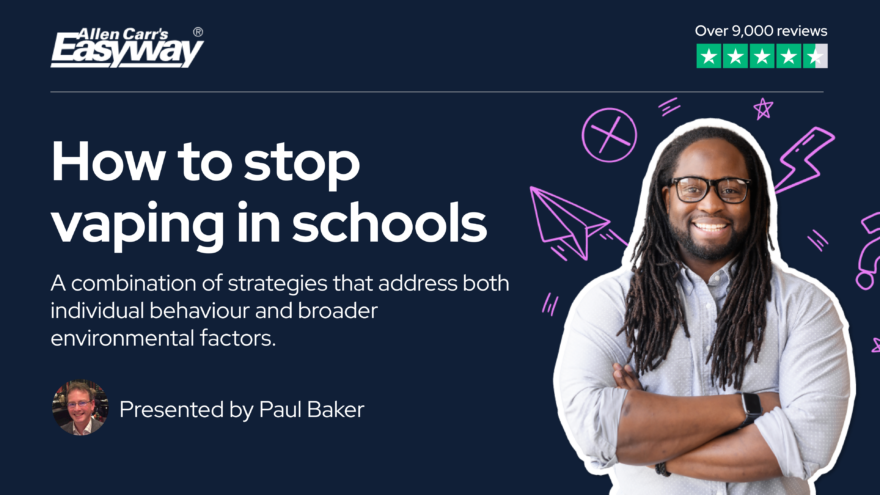6 ways to quit vaping in schools
Stopping vaping in schools requires a combination of strategies that address both individual behavior and broader environmental factors. Read on for some tips.

Tips to quit vaping in schools
-
Education and awareness campaigns
Implement educational programs that inform students and staff about the risks and consequences of vaping on their health and mental wellbeing.
These campaigns can include guest speakers, presentations, and informational materials.
Ensure that teachers are aware of what the devices look like so that they can spot them and speak with the student about the issues.
Click for more information on the health risks of vaping
Click for more information on the mental health risks of vaping
Click for more information about what is in vape juice
-
Peer support programs
Establish peer support groups where students can discuss their experiences with vaping, share tips for quitting, and provide encouragement to each other.
Include discussions on vaping as part of lessons such as life lessons such as PHSE or in tutorial sessions. The aim is to help the students understand that vaping is not risk free.
Use the literature from the police to highlight the dangers from normal vapes and from illegal vapes.
-
Counselling and support services
Offer counselling services or support groups for students who want to quit vaping.
It is important to ensure that students understand all the available options to give them the best chance of success including Allen Carr’s Easyway to quit vaping for teens
-
Create a vape free policy and enforce it
Enforce strict school policies against vaping, including disciplinary actions for violators.
Consistent enforcement sends a clear message that vaping is not tolerated on school grounds.
Fit vape detectors in key areas such as toilets to help with the enforcement.
Set a policy that no vape devices are allowed on school premises and remove such devices if seen in school.
However, as stated above, be mindful that most addicts want to be free and have not been able to find a way to escape the trap so they need help to get free, not just punishment when caught.
-
Parental involvement
It is key to engage parents and guardians by informing them about the dangers of vaping and encouraging them to discuss the topic with their children at home.
Importantly give parents the tools to discuss the issues with their children, understand the risks and how to spot that their child might be vaping.
Read more information on the health risks of vaping
Read more information on the mental health risks
Read more information about what is in vape juice
Read more information on should teens vape
Read more information on how to tell if your teen is vaping
See also the video below which shows how vaping devices can be hidden in plain sight
-
Environmental changes
Implement environmental changes such as installing vape detectors in key areas such as toilets where students are known to vape in secrecy.
Think of increasing supervision in areas where vaping is prevalent to deter students from vaping.
Police warn schools, parents, and kids about vapes

In 2024, the Police wrote to parents in London on two occasions warning about the risks of vaping after young people were hospitalised after vaping.
The letters stated the dangers of vaping particularly to young people whose lungs and brain are still developing.
They also highlighted that normal vapes have not been tested medically to determine either short-term or long-term effects on the health of user.
In addition some vapes have been found to contain dangerous and addictive drugs such as ‘spice’ and high levels of THC, the psychoactive chemical found in cannabis.
Read full article on Police warn schools about dangers of vaping
Why wait to quit vaping?
Our online video program is tailored for teens, offering a powerful and supportive way to quit for good.
Buy now for just US$10Free Online Quiz
Not sure if you really want to quit vaping?
Need help to quit vaping?
Want to quit, but concerned that you’ll find it tough?
Worried that you’ll be deprived for the rest of your life without vapes?
We can help you to understand and remove those fears and in so doing, make it quitting easy.







